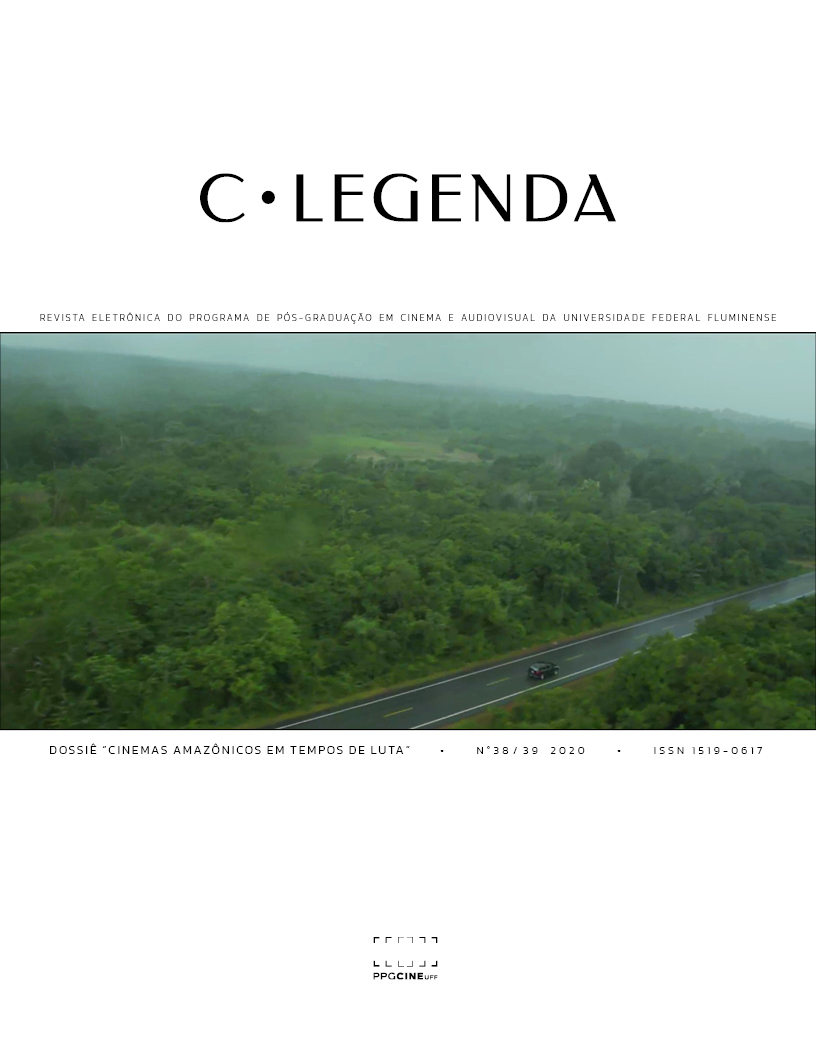"Mil e uma noites", "Arábia". Vozes de narradores, sons ambientes, silêncios, crise, trabalhismo
Palavras-chave:
Som, vozes, silêncios, crise, trabalhismoResumo
A trilogia de longas-metragens intitulada As mil e uma noites, do diretor português Miguel Gomes e o longa-metragem brasileiro Arábia, dirigido por Afonso Uchoa e João Dumans, trazem uma série de afinidades. Entender tais semelhanças é o nosso objetivo inicial. Ambos se inserem em um conjunto maior de filmes contemporâneos que utilizam em suas narrativas vozes de narradores marcantes, momentos de silêncios de importância evidente, e relações interessantes entre tais vozes, silêncios e os sons ambientes. Pretendemos demonstrar que tais obras propõem representações relevantes de crises do capitalismo contemporâneo e da classe dos trabalhadores, em um momento histórico de precarização e de perdas de direitos. É nossa intenção, ainda, demonstrar como os elementos sonoros citados acima são centrais para a construção de tais representações. Sobre As mil e uma noites (2015), propomos analisar a multiplicidade de vozes presentes na adaptação cinematográfica da coletânea célebre de contos. Em Arábia (2017), um trabalhador que sofreu um acidente no exercício de sua profissão se transforma em um narrador improvável, que se confessa pouco letrado, mas cujas palavras seguiremos. Para além das relações entre as vozes e as imagens em tais obras, perguntamos: como
Downloads
Referências
BARTHES, R. “The grain of the voice”. In: STERNE, J. (org.). The sound studies reader. New York: Routledge, 2012. p. 504-510.
BUCKLAND, Warren. “The Acousmatic Voice and Metaleptic Narration in Inland Empire”. In: HERZOG, Amy; RICHARDSON; John, VERNALIS, Carol (org.). The Oxford handbook of sound and image in digital media. Oxford: Oxford University Press, 2013, p. 236-250.
CHION, Michel. Audiovision – Sound on Screen. New York Columbia University Press, 1994.
_________. The Voice in Cinema. New York: Columbia University Press, 1999.
CHOW, Rey. “The Writting Voice in Cinema: A Preliminary Discussion”. In: WHITTAKER, Tom; WRIGHT (org.). Locating the Voice in Film. Critical Approaches and Global Practices. New York: Oxford University Press, 2017, p. 31-46.
COULTHARD, Lisa. “Dirty Sound - Haptic Noise in New Extremism”. In: HERZOG, Amy; RICHARDSON, John,;VERNALIS, Carol (org.). The Oxford handbook of sound and image in digital media. Oxford: Oxford University Press, 2013, p. 115-126.
IHDE, Don. Listening and voice – Phenomenologies of sound. Albany: University of New York Press, 2007.
MARKS, Laura. “A Noisy Brush with the Infinite: Noise in Enfolding-Unfolding Aesthetics”. In: HERZOG, Amy; RICHARDSON; John, VERNALIS, Carol (org.). The Oxford handbook of sound and image in digital media. Oxford: Oxford University Press, 2013, p. 101-114.
WHITTAKER, Tom; WRIGHT (org.). Locating the Voice in Film. Critical Approaches and Global Practices. New York: Oxford University Press, 2017.
ZUMTHOR, Paul. A letra e a voz. São Paulo: Companhia das Letras, 1993.
Downloads
Publicado
Edição
Seção
Licença
Autores que publicam nesta revista concordam com os seguintes termos:- Autores mantém os direitos autorais e concedem à revista o direito de primeira publicação, com o trabalho simultaneamente licenciado sob a Creative Commons Atribuição-NãoComercial, CC BY-NC permitindo o compartilhamento do trabalho com reconhecimento da autoria do trabalho e publicação inicial nesta revista, sem que o material seja usado para fins comercias.
- Autores têm autorização para assumir contratos adicionais separadamente, para distribuição não-exclusiva da versão do trabalho publicada nesta revista (ex.: publicar em repositório institucional ou como capítulo de livro), com reconhecimento de autoria e publicação inicial nesta revista.
- Autores têm permissão e são estimulados a publicar e distribuir seu trabalho online (ex.: em repositórios institucionais ou na sua página pessoal) a qualquer ponto antes ou durante o processo editorial, já que isso pode gerar alterações produtivas, bem como aumentar o impacto e a citação do trabalho publicado (Veja O Efeito do Acesso Livre).


